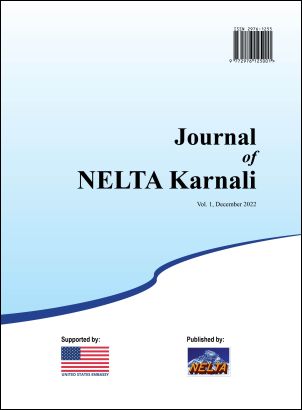Exploring Feminism on Ghãtu Cultural Site
DOI:
https://doi.org/10.3126/jonk.v1i1.57226Keywords:
Commodities, Feminism, Ghãtu, Sati system, CultureAbstract
This paper analyzes Ghãtu cultural site from a feminist approach. Ghãtu cultural site has been studied mostly from the anthropological point of view but it has not been studied from this approach. The study explores feminism on this site to make the readers aware of female identity and gender equality by teaching feminism in EFL classes because society is not free from the grip of male domination. The pedagogical implications are to make the students or the new generation aware of gender discrimination. Most females think that their misfortune victimizes them but this paper attempts to prove that it is not. This paper suggests that misfortune should be changed into good fortune. According to the theory of feminism, the female voice should be addressed. Ghãtu cite is a burning example of extreme male domination. The sati system, immolation, compels queen Yemphawati, to jump into the burning pyre of her husband. The findings of the study show that society has been knowingly or unknowingly dominating and using females yet. This essay protests the conservative thought of a patriarchal society. Still, some males are guided by such a poor mentality and they want to dominate females. The study is about maintaining the balance between male-female so that a win-win game will be there. The trend of othering never results positively. And this paper forwards these questions. Why do males treat females as commodities in Ghãtu? What are the main reasons of the over-domination of females? Are females weaker than males?




